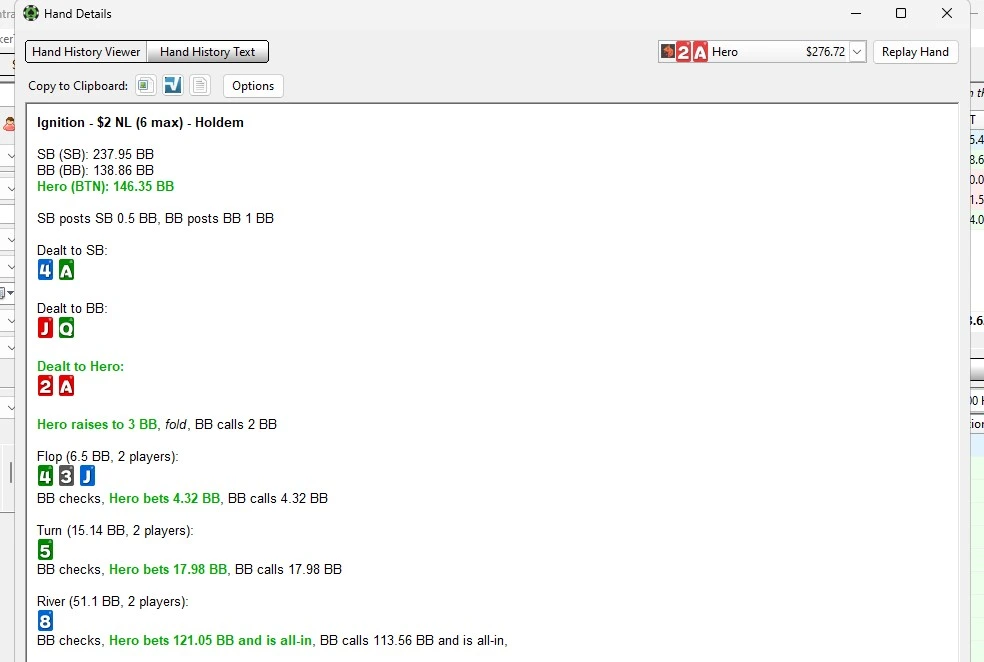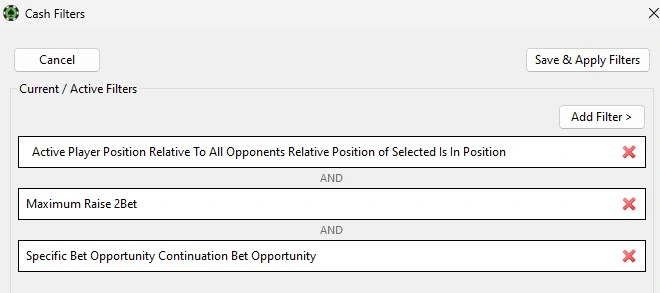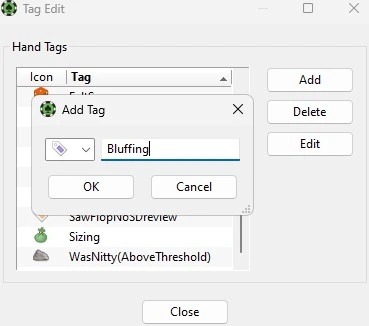Improve Your Game Through Hand History Review

Apr 11, 2025
•
3 min read
It's on the strength of observation and reflection that one finds a way. So we must dig and delve unceasingly.
- Claude Monet
In the past two sections, we discussed variance and how it affects our short and long-term poker results. We discovered that increased win-rates shorten our downswings in both length and amount. Join us now as we discuss the single most important method for increasing your win-rate: hand history reviews!
In this entry, you will discover the most effective ways to learn from your own actions. Just as professional athletes review their games in the locker room, so do professional poker players analyze their hand histories.
Let’s go!
Managing Hand Histories: How Do You Remember Your Hand in Poker?
A hand history covers all the decisions made by each player in one hand of poker from start to finish, including starting stack sizes and stakes. Every single online player uses software to remember these.

Online poker rooms provide hand histories that software such as PokerTracker 4 or Holdem Manager 3 captures as you play, or upload after the sessions. You can then look up hands by time, size of pot, or any other parameter.
How to Effectively Review a Hand History
You’ve likely revisited some big pots you lost and maybe even shared the hand history with friends or in a poker forum. While this type of review is helpful, it’s far from the best way to learn from your own play. To understand why, consider how often you find yourself in a large pot compared to a smaller one.
We discussed the poker game-tree earlier, noting that we reach certain branches and nodes frequently, while others are rare.
For example, every flop you see as a preflop raiser will involve a CBet decision. By contrast, facing a river check-raise is much less common. Because of this, CBetting impacts your win-rate more significantly than responding to river check-raises.
1. Filter for Common Spots
As we review our hands, the goal is to align our actions with the overarching strategy we intend to use consistently. These sessions can also help us refine or even develop our strategy if we don’t have one yet.
For example, say we CBet second pair on a wet flop like 8-7-5. Using poker tools and apps, we can check if that move fits within our intended strategy. We can categorize the combinations in our range into those that CBet and those that check, then compare this specific hand to see if CBetting second pair aligns with our goals.

Once we’ve gathered enough volume, we can revisit our approach, analyzing our player pool to develop exploitive counters based on how our opponents play.
Here are some common spots to focus on when analyzing your hand histories:
- Defending the big blind against CBets
- CBetting in 2-bet pots out of position
- CBetting in 3-bet pots in position
- Facing CBets out of position in 3-bet pots
- Barreling on the turn
- Calling river bets
Taking this methodical approach to hand history review strengthens our overall strategy by focusing on specific situations and nodes in the game tree.
2. Tagging Hands
Our hand history trackers allow us to mark hands for review while we play. Using these tags in two key ways can help us with situations that are hard to filter for and with areas of the decision tree we're currently working to improve.

For the latter, say we’re focusing on refining our double-barrel strategy-we can tag double-barrel opportunities as they come up in our games, then filter for these tagged hands during hand history reviews.
Additionally, some scenarios are hard to filter for afterward. For instance, it’s difficult to instruct the tracker to find hands where we attempted a bluff. By creating a specific tag for bluffs, we can label those hands as they occur, making them easy to find for future review.
3. Input From Others
One of the best things about online poker hand histories is how easily we can share them. Sometimes we’ll hit a wall in our analysis, and it’s perfectly fine-even recommended-to share a hand history with friends or in a forum.
Keep in mind, though, that you’ll get more valuable feedback by asking about how our range should act in a certain spot, rather than just focusing on the specific hand you held. This approach helps build a more holistic strategy.
Important: Should You Ever Show Your Hand in Poker?
No, you shouldn’t show your opponents your hand in poker. This move can give others insights into your play. However, showing a bluff now and then can sometimes provoke an opponent.
If you think revealing this kind of information will put someone on tilt, there can be value in doing so. Generally, the less skilled the opponent, the lower the risk of any significant blowback from showing your hole cards.
Conclusion
In summary, hand history reviews offer professional poker players a powerful way to refine and stay accountable to their strategies. It’s similar to the film study that professional athletes use to improve their game.
Tracking software not only allows us to replay these hands, but also helps us filter hand histories by specific spots in the game tree.
Tools like equity calculators and GTO solutions assist in strategy development, helping us verify if our plays follow the principles we aim to apply consistently. These reviews also help us identify and fix leaks by exposing situations where we lack a well-defined strategy. Remember, the goal of review is improvement-not self-praise or self-criticism over mistakes.
ZOOM IN
The following links are recommended resources related to this section’s theme. Don’t stay in doubt--dive in! 🔔
- Software: Learn about hand history trackers like PokerTracker 4, Holdem Manager 3, and Hand2Note.
- Solvers: You may want to check PioSOLVER & ICMIZER.
- Ranges: Learn how to calculate & use poker ranges.
- Discord Community: Join the coolest poker community, don’t be shy! Use it to ask questions and interact with other poker enthusiasts and professionals.